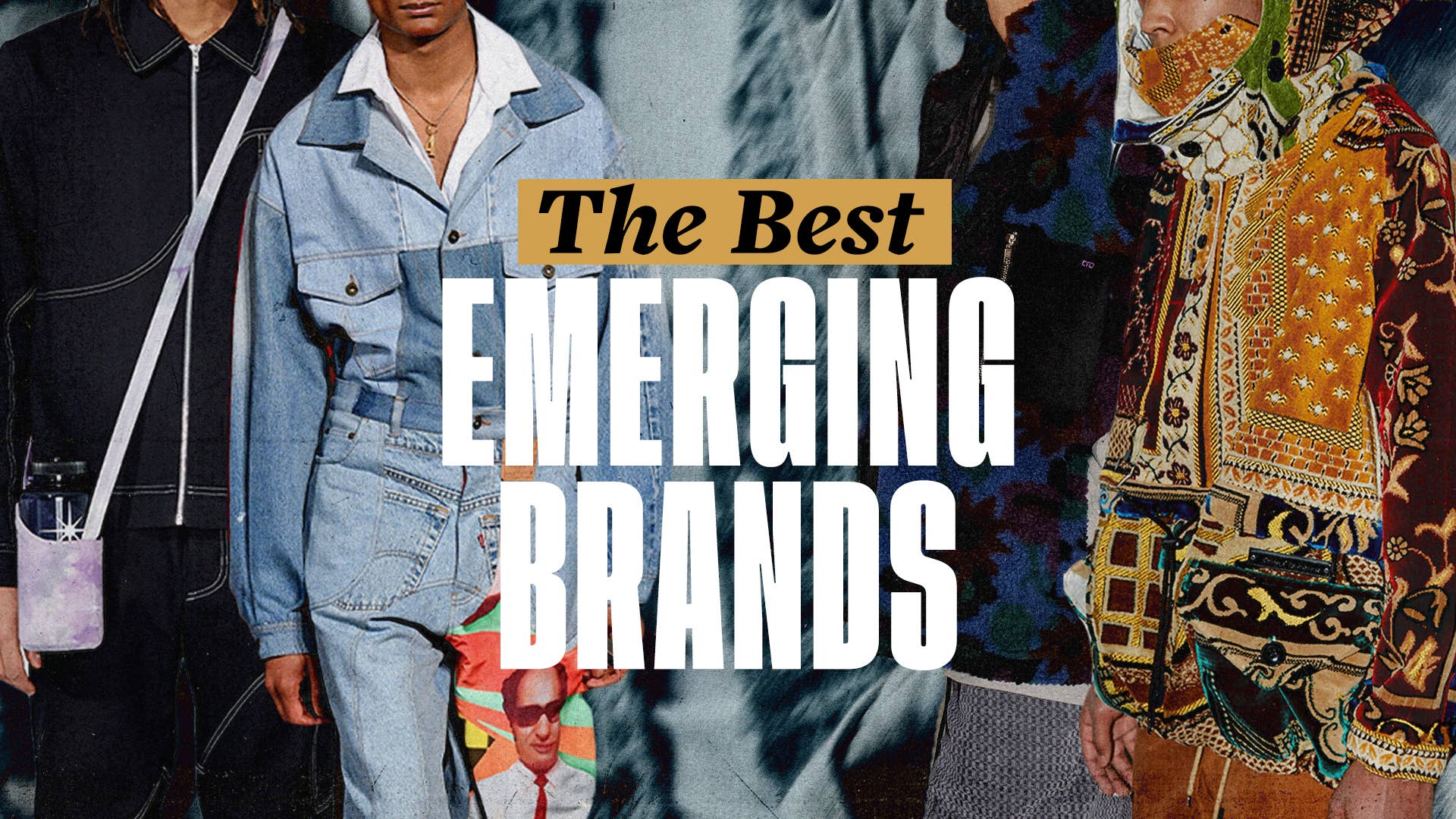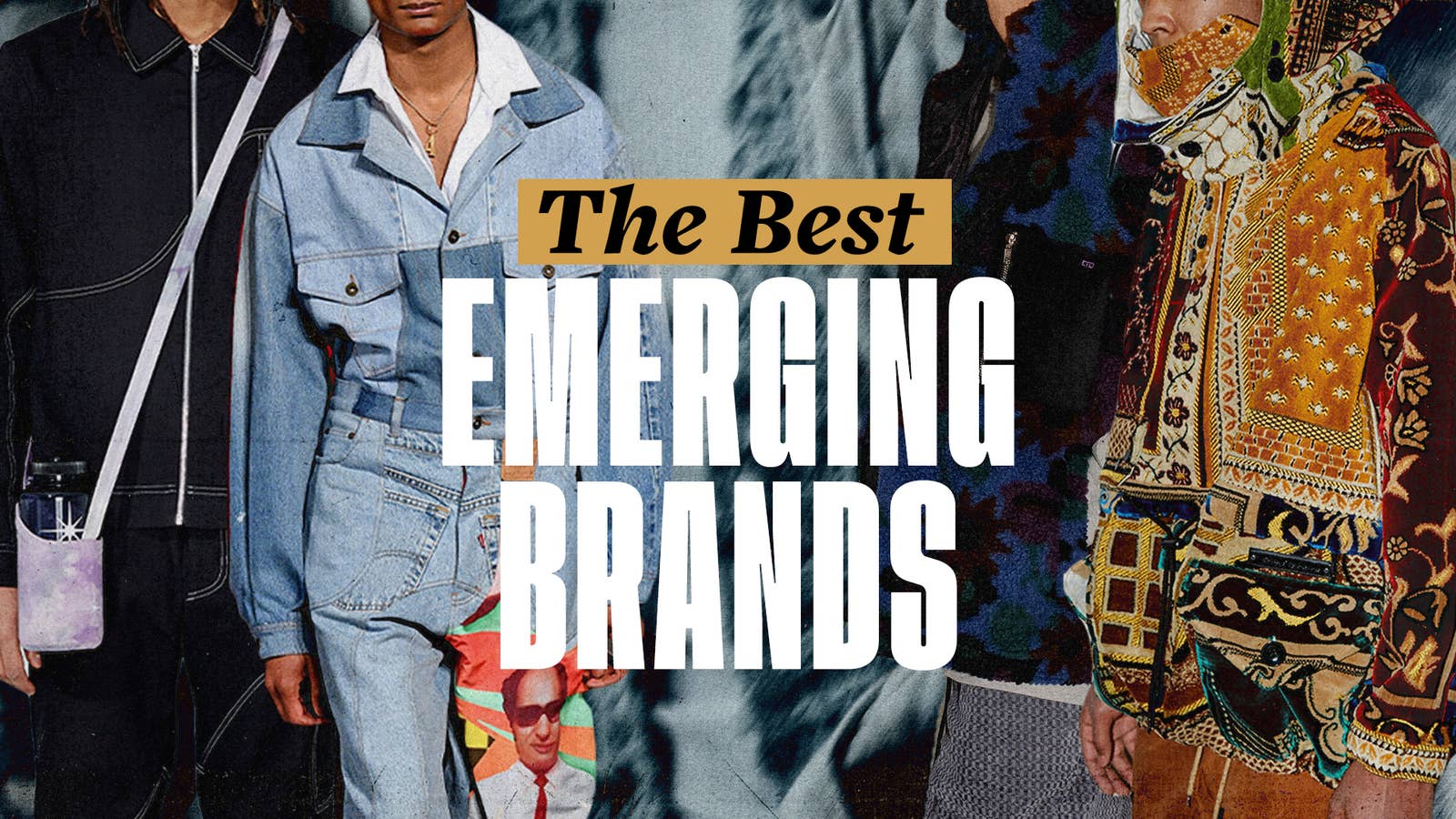
What a time to be a new brand? There’s something exciting about the early stages of starting anything new, but it can also be terrifying—with or without a global pandemic happening.
“The first week I literally cried all week. I'm like, ‘What the fuck?’ says designer Priya Ahluwalia when asked about how she's dealing with what's happening across the globe. “Now I've got my head around it. I've got to terms with it. I'm trying to just look after myself, listen to good music, eat good food, go do exercise. I'm trying to not give myself the pressure of keep asking when this will all be cleared up. Because I don't know when it's all going to be cleared up. No one knows.”
But this story isn’t about how new brands are coping with COVID-19. We do touch on it a little and hope these designers can provide some inspiration for our new normal. But this story is mainly about identifying cool people who are making cool things. There’s NONAME’s James Gregory, a 22-year-old from Charlotte, North Carolina, who is turning your grandmother’s tapestries into fresh hoodies and pants that are worn by celebs like Lil Yachty or NBA player Shai Gilgeous-Alexander. Then there’s Japanese designer Hideaki Shikama, whose Children of Discordance brand is known for its bandana jackets and shirts that have been worn by rappers like Offset. And there’s also industry mainstays like Freshjive’s Rick Kotz and Insomniac’s Pasquale Rotella who are working together on a new venture: a streetwear line heavily influenced by the ‘90s rave scene.
Read on to see how these designers launched their lines, and what they hope to achieve. And oh, support them if you can. If the pandemic has taught us anything, we hope it’s that we are all more thoughtful about what we purchase and who we support. The fashion and streetwear industry has always been built on smaller, independent labels and we don’t want to see them go away.

It doesn’t take long to realize how passionate Courtney Ogilvie is about her work. Her energetic demeanor is evident even over the phone. She has collected over a decade of experience in the fashion industry transitioning between jobs at skate brands like Osiris and Zero to operating her own factory. Now, she is the mind behind premium essentials brand, Les Tien.
Ogilvie launched Les Tien (“yours” in French) in 2018. Its offerings are broken into two lines, White Label and Black Label. White Label provides everyday basics like hoodies and sweatpants in seasonal colors that have been pre-distressed on the inside before being sewn and dyed to feel like a vintage item that has been lived in for decades but has a pristine external appearance. It's crafted in her own LA factory. Subtle details like gold hardware and snap closures further elevate the everyday basics. The Black Label is produced in Italy. It is Ogilvie’s way to experiment with silhouettes and more premium materials like Japanese silk poplin or baby corduroy.
Growing up in San Diego, Ogilvie credits her initial interest in fashion to her father, who designed for Brooks Brothers and Ralph Lauren. She says seeing his confidence every morning as he came down the stairs dressed in his office fits resonated with her. Since the age of 5, her dream has been to creative direct Bottega Veneta.
“I started to identify looking good with feeling good. And that was really where it broke off for me,” says Ogilvie. “If you can give somebody that's insecure something that makes them feel included and special and affordable, that's gangster shit.”
Before Les Tien, Ogilvie launched Fit and Supply in 2008, a freelance product development and management agency that helped brands bring their ideas to life aiding everything from sample construction to lookbooks. Eventually, she opened LA Makers, her own factory in Downtown LA, in 2014.
“I built this really amazing network of the best pattern makers, best sample sewers, best everything [in Los Angeles],” says Ogilvie. “I do think I'm one of the most knowledgeable product developers in LA. Period. End of story.”
She was successful and became a millionaire in her early 20s. Just as quickly, she resorted to living in her car to keep the businesses afloat. High costs and internal money issues caused both companies to shutter in 2015. She was homeless by 33 and Ogilvie spent the next few years away from the space before starting Les Tien.
Les Tien’s list of stockists reads as a who’s who of luxury retailers that includes Maxfield LA, Hirschleifers, Beams, United Arrows, Harvey Nichols, and Browns. The celebrity clientele is equally as impressive with names like LeBron James, John Mayer, Hailey Bieber, and Kylie Jenner all wearing the brand. But Ogilvie isn’t too focused on the celebrity endorsements. She wants her products to be attainable for everyone. T-shirts are priced at $95 and hoodies retail for $250. The line comes in a bevy of color options.
“Les Tien is something for everybody. There's no reason a fucking T-shirt should be $700. I know how to make them better than anyone. I'm taking a 50 percent margin like everyone else and I'm offering literally the lowest price I can in luxury retail stores,” says Ogilvie. “So the fat kid who used to get made fun of in school can actually walk into Maxfield and buy something he can afford and look fly and go back to school and tell everyone to go fuck themselves.”
Next on Les Tien’s agenda is its own storefront on the famed La Brea Avenue in Los Angeles. While she says her sales have not faltered due to the COVID-19 pandemic, Ogilvie did have to delay the grand opening slated for early April. When it does open, shoppers can expect an immersive experience that Ogilvie says takes cues from Disney World’s Soarin’ Over California attraction. It will be stationed between two of the block’s most notable locations, Union and American Rag. But LA isn’t the end.
“I want to take over the globe,” says Ogilvie. “I want to have a brick and mortar everywhere my retailers are.”—Mike DeStefano
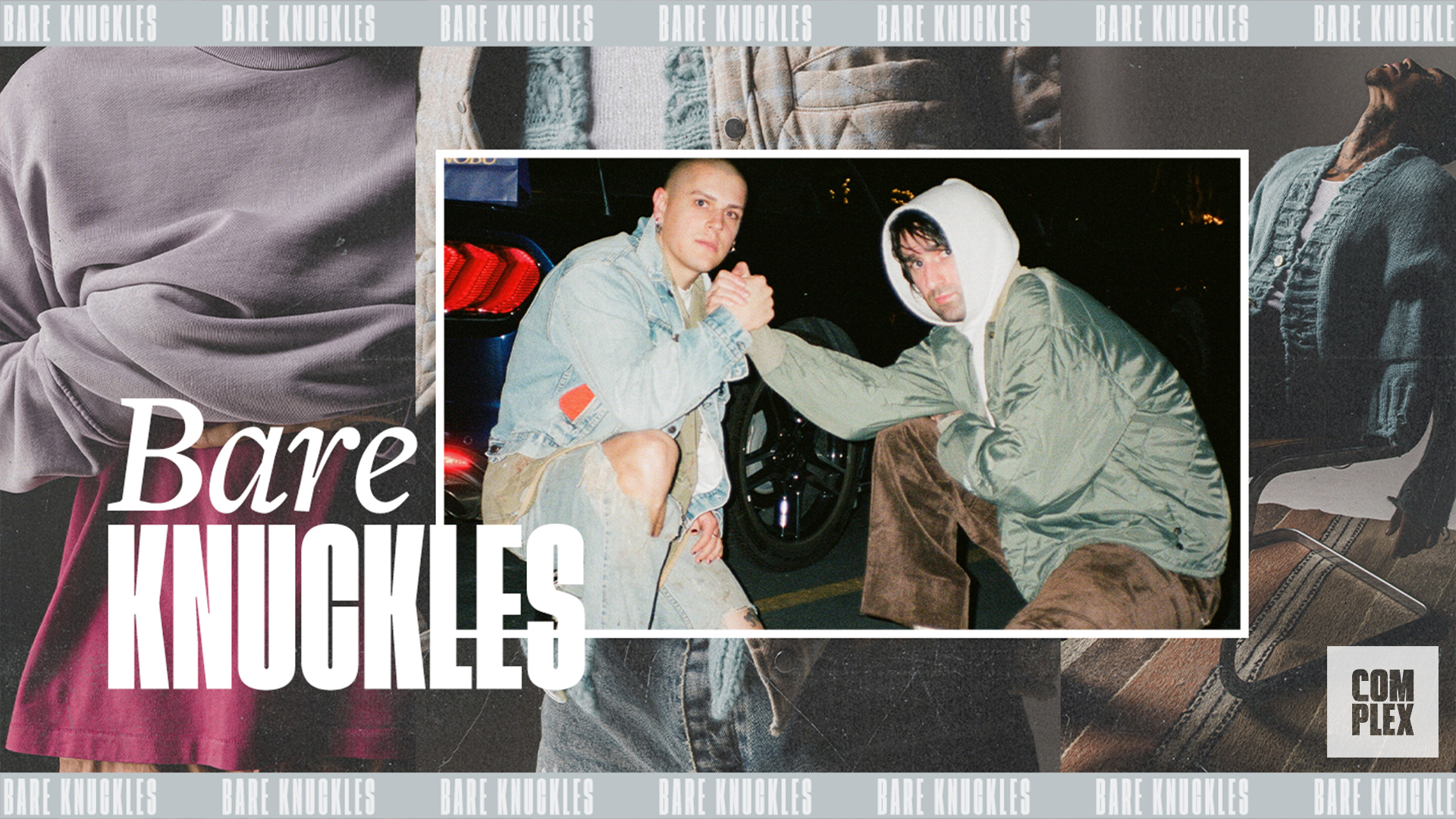
Jacob J. Keller from has come a long way since starting AlwaysFreshApparel, his streetwear-focused YouTube channel, in 2012. Now 27 years old, he is no longer reviewing pickups from The Hundreds and 10 Deep. Since 2017, he has been operating Bare Knuckles alongside his close friend and partner Cole McBride.
The Portland-based brand was birthed out of a friendship between Keller and McBride that began while they both worked at local clothing boutique, Machus. Keller left the shop to fully focus on the brand in February 2018. McBride followed about a year later in April 2019.
“I guess I just always kind of knew that [a brand] was the next logical step in clothing. You see all these clothes, and people start trusting your opinion. People are listening to what I'm saying,” says Keller. “Then you're just kind of like, ‘Well, shit. What? I'm making all these brands money. What if I can make myself some money?’”
Collections focus on cut and sew items like trucker jackets, distressed knit cardigans made of alpaca wool, and overwashed denim. Prices range from $250 for jeans or $350 for a knit sweater, but Keller, who is very price conscious, says being direct-to-consumer has allowed them to keep it fairly low in comparison to similar brands without sacrificing quality.
“We're making our stuff in the same factory as these major brands in Nordstrom. We just don't have to worry about the markup. Don't think that just because the price is lower, you're not getting the same quality,” he says.
Bare Knuckles is sold exclusively through the brand’s web store. Production is handled in Los Angeles, which means Keller and McBride are traveling back-and-forth often from Portland. Earlier this year, they also moved to a warehouse space in California through Bergen Logistics, a company that handles order fulfillment for popular names like Aime Leon Dore and John Elliott. This helps alleviate some of the headache of storing all of their product in Portland and handling shipping themselves. Keller references ALD’s Teddy Santis and John Elliott as designers he looks up to.
“[Elliott] and I had a phone call a few years back. He was telling me, ‘Oh, you remind me of a young me.’ I was like, ‘Oh, shit. That's crazy,’ and just seeing where he's taking his business and how he does everything is great,” says Keller. “I also like the way Teddy from Aimé Leon Dore operates his business. I went into the store in SoHo. I love that he wasn't pressuring anyone to buy anything. It was more about creating this community where you could just go and hang out.”
Collections are heavily influenced by past eras with Keller saying a lot of the design language points to the ‘50s, ‘60s, and ‘70s. The brand currently releases two collections per year, Fall/Winter and Spring/Summer, but seasons don’t necessarily dictate the type of product they will drop. A heavy overcoat could drop in the warm months. A boxy T-shirt could drop in when there is snow on the ground. Keller says they also aim to introduce original graphics in upcoming drops too.
“It really is just where our mindset is. Maybe the next collection will be sweatsuits because we've been sitting in the house so much,” Keller tells Complex. “That's what I think is so awesome about us and not having to answer to some big corporation or big schedule.”—Mike DeStefano
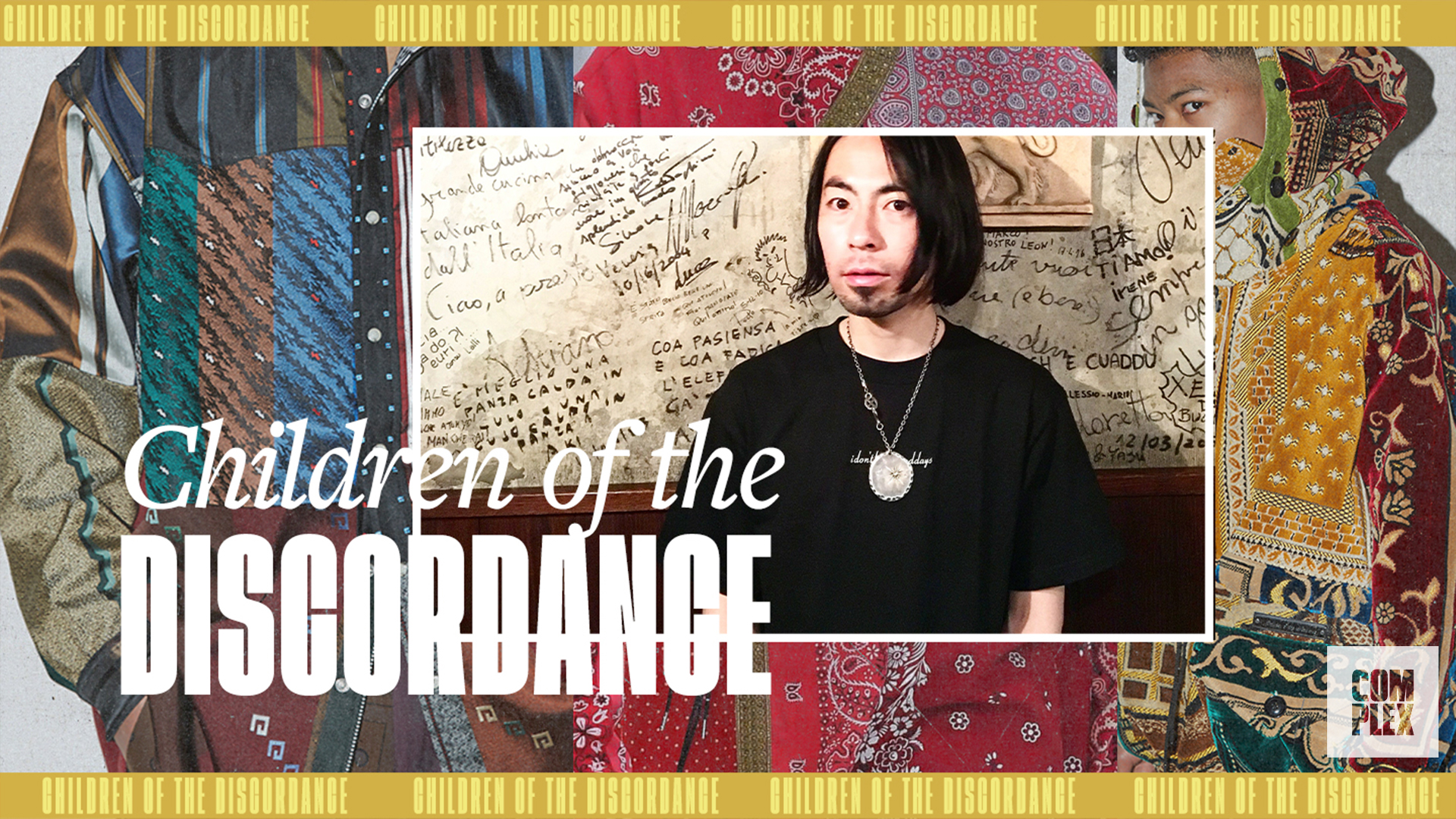
Years before Hideaki Shikama founded his brand, Children of the Discordance, he was a ‘90s kid who grew up in the Japanese city of Yokohama on a heavy dose of East Coast hip hop and skateboarding. His love for these two subcultures collided when he had the opportunity to spend two summers in New Jersey during the early ‘90s, which is when he stumbled on stores like Union, Zoo York, and Supreme in 1994. He points to this era of streetwear as a one of many influences.
“My background in design consists of my lifestyle and my experience delving into different cultures,” says Shikama, who first began designing clothes when he was 23 years old for the Japanese streetwear store Acycle and the brand SHIPS JET BLUE. “I graduated from design school, but I think I got more inspiration from my experiences on the street. Just meeting people in the ‘90s taught me everything.”
Today, Shikama has literally upcycled his past into Children of the Discordance, a brand that has become recognized for reimagining vintage garments into modern patchwork pieces. He started the brand in 2011, but has only been previewing the collection at fashion week for the past couple of seasons, which has brought him more awareness. The brand is known for its signature bandana jackets and shirts that have been worn by rappers like Offset. Shikama views design like sampling a hip hop record or improvising on stage like a hardcore brand. He’s aiming for a sound that feels both nostalgic and new. Take his recent release at Dover Street Market Ginza for instance, where he released patchwork T-shirts crafted out of his own collection of archival Stussy T-shirts from the ‘90s.
“I think it is hard to find archive clothing and vintage but I have been collecting it for a long time,” says Shikama, who sources his vintage materials from the United States, Japan, France, The Netherlands, Mexico, India, and Palestine. “But I know the history of streetwear within the past 30 years, so I can tell the age of T-shirts by just the manufacturer's tag. I can revive this valuable art by reconstructing an archive.”
Shikama has gone on to receive the Tokyo Fashion Award in 2018. It’s stocked in retailers worldwide such as Dover Street Market, Browns, International Gallery Beams, and Maxfield. The clothes retail for $90-$2,300, but the price of upcycled vintage materials cannot be compromised. For now, he says Children of the Discordance is focused on wholesale. But a flagship store is not out of the question. The goal right now is the same for many other designers. To just get through this global pandemic.
“I can only give people happiness, dreams, and a little power with clothes,” Shikahama responds when asked about his main desire for the brand. “I want to protect my family, friends, business partners, and customers. We are now preparing to launch a new collection that will give people some hope after this pandemic is finished.”—Lei Takanashi

To understand the roots of Avi Gold and his brand Better Gift Shop, you have to roll the clock back and picture Toronto’s streetwear scene in the pre-internet era. Back when you could have found a young Avi Gold chilling at 431 Richmond Street West—a streetwear hub that housed stores like Stüssy, Nomad, Goodfoot, and Ransom. In the early 2000s, this was where you could have found a pre-OVO Drake chilling with his manager or The Weeknd before they became Toronto’s superstars. Gold was also there when Vice magazine opened a store nearby on Queen Street West, which was where Gold first discovered fresh New York City streetwear brands at the time such as SSUR, aNYthing, and Alife.
“431 Richmond Street was just this crazy environment with all sorts of interesting people in the mix, so the bar was raised really high at a young age,” Gold remembers. “I don't really have any formal design background. I’ve just always had big ideas and a lot of different interests. Now, I have my own outlet to publish these ideas.”
Before launching Better in 2014, Gold was already well known for being an instrumental part of the poster-sized publication Sneeze Magazine, where he put together issues on the 15th anniversary of Supreme and even conducted one of the last interviews with the late graffiti legend Rammellzee. So it doesn’t come as a surprise that thoughtful curation of underground art is what shines through in Better’s graphics. Going through the brand’s releases almost feels like flipping through an early 2000s issue of a culture magazine like Mass Appeal or Frank 151. You’re bound to discover a fresh new artist by just going through their web store. For example, Better recently dropped a T-shirt with a graphic logo drawn by Post VSOP, a graffiti bomber who currently has the streets of New York City on smash right now. And long before Supreme and A Bathing Ape hit up the artist Shaun Crawford for some T-shirt graphics this year, Better had collaborated with Crawford on multiple pieces of apparel since 2017.
“I'm always looking for new and interesting people that would make sense for what we're doing as a brand,” says Gold, who points out that almost all of Better’s graphics are original and aren’t logo flips. “Whether it's a friend telling me about this girl that makes great collages or finding a guy that used to design art for Mo’Wax, there’s a lot of different conversations and research involved with the graphics that we create. It's like piecing a puzzle together.”
Within the six years since Gold launched Better, he went from running a humble “hot dog stand” in Dover Street Market to having permanent installations at DSM stores in New York, Japan, London, and Los Angeles. His buzz has built within the last two years and the brand has also released collaborations with Marc Jacbos, Stussy, and Comme des Garcons’ “CDG” line. Recent collaborations, like Better’s Motown Records varsity jacket, have been worn by celebs such as Young Thug and Lebron James. When asked about how Better landed all these collaborations, Gold simply says that it all comes about organically. Although Gold aspires to open more Better Gift Shop brick and mortar stores outside of Toronto, he doesn’t want Better to be defined as a clothing line.
“We want to be a project-based brand that just builds out these amazing projects rather than being forced to produce clothing on a seasonal basis,” says Gold when asked about Better Gift Shop’s future goals. ”We're just trying to make exciting products that will withstand the test of time and aren't really disposable. We always want to be on a different level without being pretentious. There's a reason why we're called “Better.”—Lei Takanashi
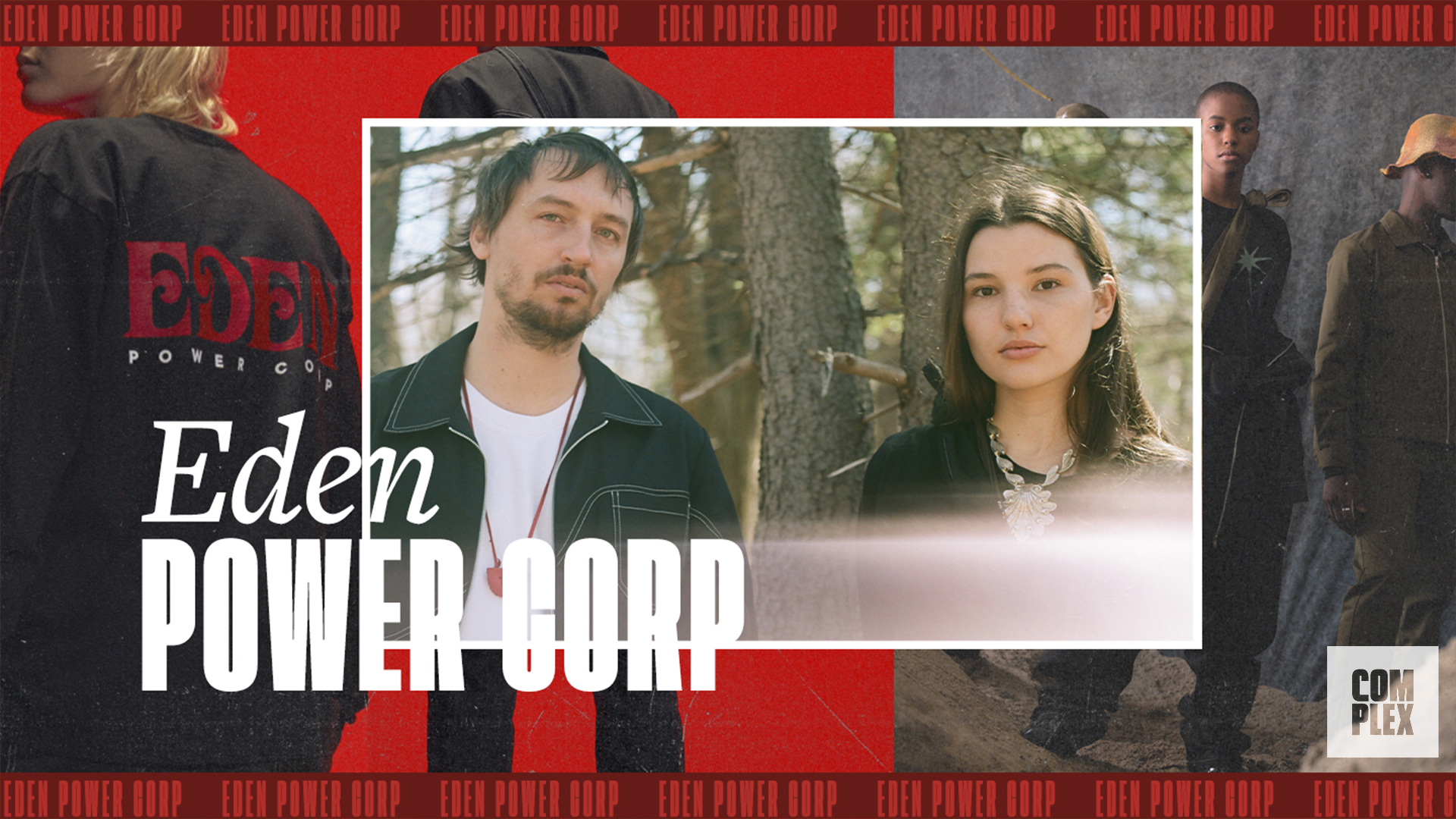
One of the main inspirations behind Eden Power Corp, a streetwear line from the Canadian couple Isaac Larose and Florence Provencher Proulx, is simply a more conscious lifestyle. The couple doesn’t own a car, they utilize reusable cups wherever they go, commit to a plant-based diet, and take other little steps to minimize their carbon footprint. This lifestyle is echoed in the brand’s motto: “Alternatives for a better future.” The “alternatives” are reflected in Eden’s clothing, which includes 100 percent recycled cotton T-shirts and work jackets created with hemp fabric. But the “future” is emphasized more with the brand’s science-fiction inspired graphics, which include phrases like “Permaculture“ or “Solar Energy Department.”
“Obviously thinking about solar panels or solar energy is not a part of everyone’s bigger day. But If you're younger and you see a cool brand that is pushing for it, you’re going to think about it when buying a new home,” says Larose, who sees Eden’s garments acting like a “Trojan Horse” to a more sustainable lifestyle. “If you make it cool, then maybe that's going to spark a little bit of interest and change their minds. That's kind of what we're trying to do with the brand.”
Through Eden Power Corp, Larose gets a chance to do something bigger than ‘Larose Paris’—his namesake high-end headwear brand which became a favorite of Four Pins writers like Jon Moy. Although Larose Paris landed collaborations with brands like White Mountaineering—and a “dream deal” with a French factory that handled all production, sales, invoices, and shipping—Larose had no control over the materials the factory used and felt limited to just making hats. With Eden, he’s not only able to work with his partner and handle production in Montreal’s garment district, but also produce garments that fit into a better vision of how clothing should really be made.
“A true luxury brand takes the time to make something well and source its materials well. For us, we have that luxury of having this lifestyle that doesn't cost much, so we can take the time to change these little details because we don't need to make tons of money,” says Larose, who works with the Eden Reforestation Project to plant 20 trees for each item sold on Eden Power Corp’s web store—they’ve planted 10,000 trees within its first year of launch. “We don't have a lot of cash or a big grant backing us. We have a small home, no cars, and a small office, so we can take the time to make things right.
Although Eden Power Corp just turned a year old, it’s message has been well received by over 15 stockists globally including Union in Los Angeles and Slam Jam in Italy. Eden Power Corp is not touting itself as the most sustainable clothing brand out there. But it’s also not a brand that’s just beginning to think about the environmental impact of clothes later down the line. Out the gate, Eden Power Corp is trying to make something better with its clothing . Right now, Larose says the main goal for the brand isn’t to necessarily get more stockists or land major collaborations. It’s to build a community around the brand and push sustainability into the forefront.
“Building a community is the most important thing for us right now,” says Larose. “That's when it's going to be fun because I think that's the whole point of streetwear. It's about a culture and the people who participate in it.”—Lei Takanashi

When Al Verik and Peter Jurado first launched Paa in 2013, they launched the brand with a humble drop of three bucket hats crafted out of melton wool. At the time, Paa was just a side project. Verik originally worked within the music industry while Jurado, who graduated from a Fashion Institute of Design and Merchandising, worked within the apparel industry. But after the duo first met at a house party, they bonded over their love for high quality clothing and decided to turn their conversations into actual products. Although Paa wasn’t producing anorak windbreakers made out of Japanese nylon taffeta straight away, the brand’s first hats established their message. A baseball cap or a classic pocket T-shirt are classic garments that don’t need to be reinvented. So if something isn’t broke, don’t fix it.
“We've been taking the same approach since day one. To just make stuff that we love but focusing mostly on fabrics, fits, and shapes we really like,” says Verik, who points out Paa's heavyweight pocket T-shirts as the “gateway” piece into their brand. “These are designs that we think are timeless and that people will have for a long time.”
You won’t find any flashy branding on Paa products. But you will find classic garments made from high-quality materials that are bound to last for decades. Although Jurado and Verik fondly look back on brands they grew up with, such as Alphanumeric and Polo Ralph Lauren, they say Paa’s main inspiration lies within the fabric itself, which is sourced from Japan, Europe, and the United States. Although Paa’s products may be reminiscent of old school items from heritage outdoor brands like L.L. Bean, Patagonia, and The North Face, Jurado says that the brand’s uniqueness comes from not being tied to any specific inspiration or style.
“We're big fans of traditional menswear and just want to create a version that's either improved in our eyes with the fit or just elevated with fabric,” says Jurado. “For example, we really like using French terry fabric in hoodies and sweatshirts but want to make it a more relaxed fit. We weren't trying to create or flip something on you. We were just trying to make a version that felt special to us.”
Since first dropping at the C’H’C’M’ boutique in Lower Manhattan, Paa has grown into a full time gig for Verick and Jurado during these last three years. The brand is currently stocked in over 30 stores across the world including shops like Union Tokyo and Fred Segal in Los Angeles. This year, Paa partnered with the Council of Fashion Designers of America and Reebok to hold their first ever runway show at New York Fashion Week. Style icons like Mister Mort and Complex’s own Brendan Dunne walked the runway—Dunne tells me on the side that he’s worn the brand’s popover shirt approximately 150 times. Although the COVID-19 pandemic has been challenging, the two designers are used to working apart from one another, since each designer is individually based in New York and Los Angeles. For now, Paa looks to weather the storm, open a retail setting of their own once everything goes back to normal, expand their stockists, and develop a footwear line.
“We just kind of stuck to our roots and did what we could. Kept it simple, made it very true to us, and the response was overwhelming,” Verik says when looking back on the brand’s first runway show. “I think in some ways it validated us. People mostly know us for headwear or tees, but I think people are starting to take our collections a little bit more seriously now. —Lei Takanashi
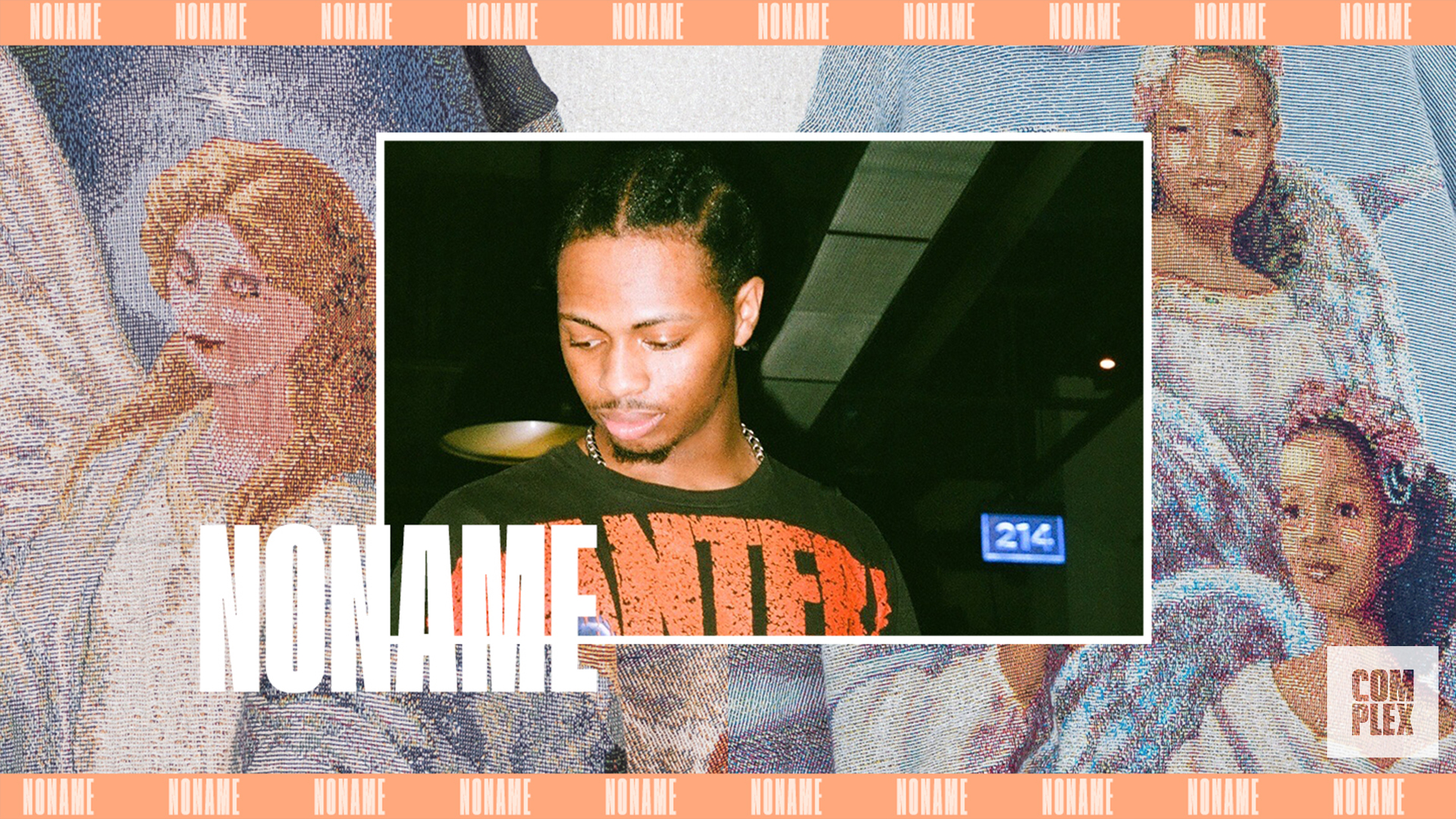
NoName is not your typical clothing brand. It isn’t producing seasonal collections. There aren’t a ton of surprise drops. There isn’t even a team at the moment. Everything is handled by 22-year-old James Gregory.
Gregory’s brand has started to bubble over the past year the way many young brands do today, through social media. The self-taught designer from Charlotte, North Carolina, has already made some noise with his unique tapestry hoodies, T-shirts, pants, and shorts. He says he got a real push when popular curation page Hidden.NY randomly reposted one of his hoodie designs for his 223,000 followers to see a few months ago.
“I woke up and my phone was going stupid. After that happened, I had way more attention on my page, way more demand,” he tells Complex. “Before that, I wasn’t doing it for money, it was just to do it. I never thought it would go to the point that it did so quickly, but it kind of all just happened.”
At the time, he had only sold a handful of items to locals, but being featured on a bigger platform he caught the eye of Lil Yachty. Gregory says he bought five hoodies at once. Ski Mask the Slump God, Oklahoma City Thunder point guard Shai Gilgeous-Alexander, influencer Zack Bia, and rising Louisville rapper Jack Harlow are the other big names who have supported NoName. Gregory says that all of the exchanges happened organically. He doesn’t give away any product.
“A lot of people think just because I'm on the come up that they are getting something for free, and with me, that's a slap in the face. I've had one of the biggest artists in the world buy from me instead of just holding their hand out,” says Gregory. “Since I don't play that game, I don't have as many celebrities as I could have.”
A retail job at Zumiez initially inspired Gregory. He felt like he could make better designs than the “basic” ones brands were charging $40 for. Names like ASAP Rocky and Travis Scott began to influence his personal style. He began to use his down time to hone his design skills. He would scour thrift stores and fabric shops for random textiles and convert them into wearable pieces. This process has progressed over time. Now, the tapestry fabric he uses is custom made to order with graphics that range from bright floral arrangements and mountain ranges to images of Bruce Lee or Tupac. Personal requests are also common. For instance, Gilgeous-Alexander specifically wanted Allen Iverson’s iconic stepover from the 2001 NBA Finals on a hoodie.
Due to the unique nature of his product, he doesn’t maintain a huge inventory. He makes three or four pieces simultaneously, with one item taking around five to six hours for him to complete. The process comes with a higher price tag. Hoodies can run as much as $500, shorts and pants run in the $300 range, and bucket hats go for $150. But Gregory says the cost of production is also fairly high. He doesn’t skimp on details like back pockets or liners like some brands do to cut costs. In the future, he wants to expand his product line to include more complex cut and sew items like jackets and denim, and eventually offer full collections. When the time is right, pop-ups in major cities will come, too.
“It's going to take longer to get to where I want to be. But me being the person I am, I'm 100 percent okay with that.” he tells Complex. “What you see now is 10 percent of what I really plan on doing. This just happened by accident. Imagine what I can do on purpose.”—Mike DeStefano
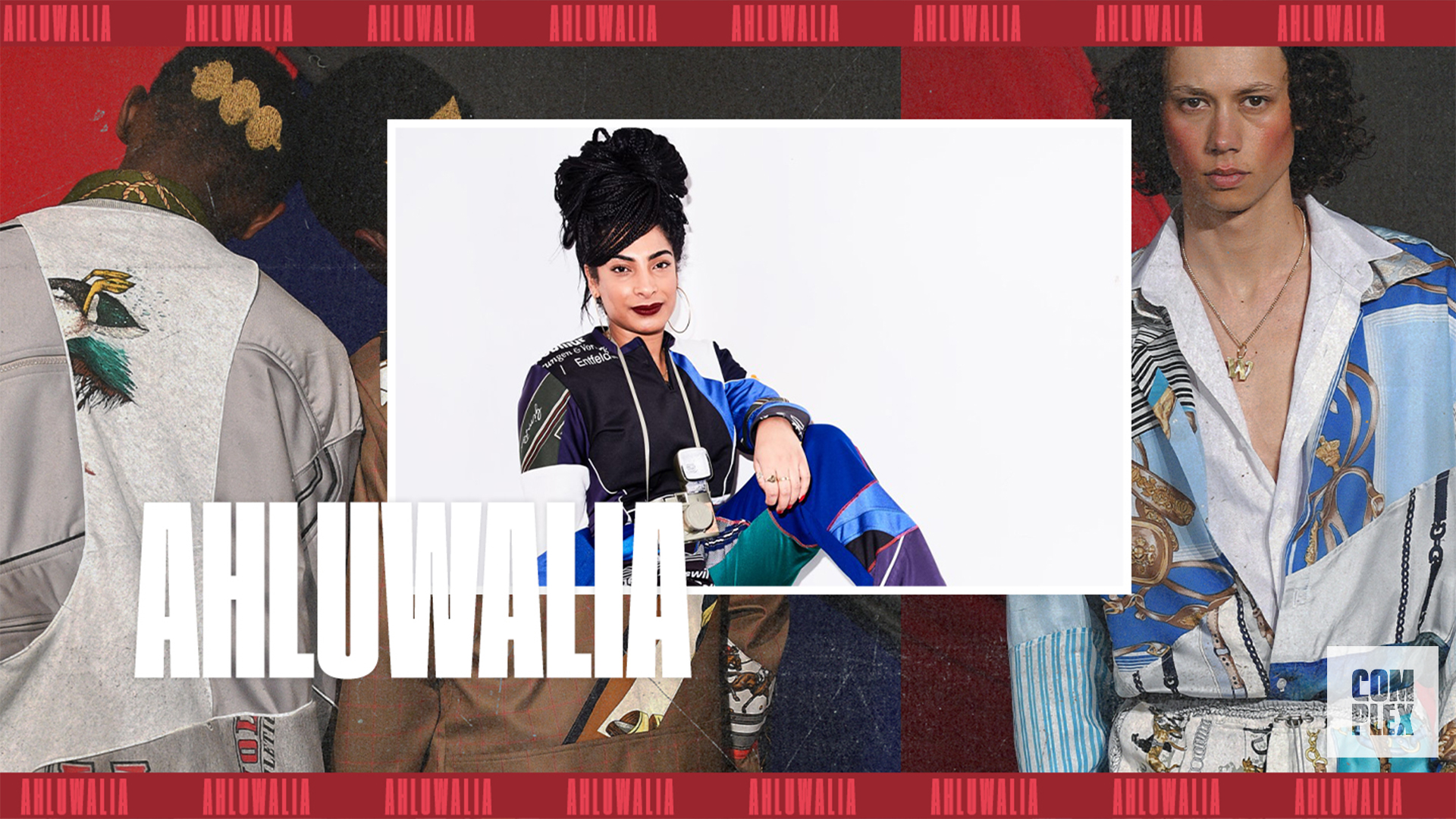
Priya Ahluwalia’s brand is only two years old, but she’s already won the industry over with her bold menswear that’s made from recycled materials and influenced by her background—her mother is Indian, her father is Nigerian, and she grew up in London.
Ahluwalia attended the University of Creative Arts Epsom before going to Westminster to get her MA in menswear—she was part of its first menswear class. A trip to visit her father in Lagos, Nigeria, in 2017 and a subsequent trip to Panipat in India helped her hone in on the vision for Ahluwalia. While in Nigeria she observed people wearing British clothing and she learned more about the second hand clothing industry. Some of what people donate is sold in thrift or charity shops, but a lot of it is shipped to other countries to be sold. Once she arrived to Panipat, she discovered piles of second hand clothing, which she then photographed for her book Sweet Lassi.
All of this helped inform her graduate collection, which was picked up by Opening Ceremony and LN-CC. Ahluwalia says her collection, which was made up of sportswear staples like denim jackets and trench coats spliced with different fabrics, and the release of her book, which came out the day she graduated, helped her line take off. From there she started selling to other retailers including SSENSE, and Nubian in Tokyo. She is currently selling capsule collections with Browns and Matches.
But before launching her own line, she gained experience working for Grace Wales Bonner, a London-based menswear designer, as a pattern cutter. Ahluwalia says Bonnor taught her the importance of brand storytelling.
“I think that Grace is a real good storyteller and she created a really nice narrative around her brand,” says Ahluwalia. “It was inspiring how she created this world and it made me think about mixed media and a lot of other things."
Ahluwalia also worked for Ivy Park, when it was manufactured by Top Shop, as a designer. She was the sixth person hired for the team. “There I learned that sometimes having so much money to invest in an idea leads to too many cooks and too much waste.”
Ahluwalia’s anti-waste ethos has made fabric sourcing a little challenging—before COVID-19 she was set to hire someone to look for deadstock, used, or sustainable fabrics—but it hasn’t hindered her. Her creative process doesn’t start with fabrics, but instead researching and culling references for the season. Her Fall/Winter 2020 collection, for example, was guided by the year 1965, when her stepfather was born. She looked at what colors, architecture, art, music, and political happenings were prevalent in Nigeria, India, and the Carribean during those years. She also referenced work from artist Barbara Brown, who was known for curved op-art. This resulted in a color block puffer coat with curved embroidery, track pants made from deadstock Adidas fabrics, and matching corduroy and denim sets with ‘60s influenced embroidery.
Her approach has been working. She won the H&M Design Award in 2019, which is H&M’s annual prize for the best graduate designers from around the world, was tapped by Pharrell and Adidas Originals to create a collection and design sneakers for a program called MakerLab, which was previewed during Paris Fashion Week in early 2019. And she was one of the eight finalists selected for LVMH’s Young Designers 2020 Award. Because of the pandemic, LVMH decided to not announce a winner and divide the reward money across the finalists.
COVID-19 has halted a few projects, including a women’s line she was set to launch this year, but Ahluwalia says it’s given her time to reflect.
“The first week I literally cried all week. I'm like, ‘What the fuck?,’ says Ahluwalia. “Now I've got my head around it. I've got to terms with it. I'm trying to just look after myself, listen to good music, eat good food, go do exercise. I'm trying to not give myself the pressure of keep asking when this will all be cleared up. Because I don't know when it's all going to be cleared up. No one knows.”
For the future she’s hoping to turn her collection into a full on lifestyle line that includes home, work with larger brands that can supply used or sustainable textiles, and continue to push innovation in clothing manufacturing.
“My ultimate goal will be to keep surprising people with what I'm bringing out and to stay as an industry leader in terms of making a new system for this way that we do fashion and what materials we use and the impact on the planet,” says Ahluwalia. “That's something I really don't want to let go of ever.”—Aria Hughes

Neither Rick Kotz or Pasquale Rotella are newbies. Klotz, an LA-based streetwear industry vet, launched Freshjive in 1989, and Rotella, a staple in the EDM community, founded Insomniac, a company that throws underground parties, in 1993. But the two have joined forces to start Insomniac LTD, a new clothing brand that represents the rave culture both Klotz and Rotella are deeply connected with—early in his career Klotz would design fliers for underground party promoters. Klotz calls Insomniac LTD, which started in 2019, a fashion subdivision of Insomniac Events.
They knew of each other over the years, but happened to meet at Top Round Beef on La Brea in Los Angeles and bonded from there. Rotella wanted to use the line as a way to expand EDM culture, and Klotz was tired of seeing luxury brands pull from ‘90s rave culture in an inauthentic way.
Klotz says the message of the brand is “house music all night long,” while Rotella believes the ethos of the line is “rave on.” The collection, which is made mostly in Los Angeles, includes T-shirts, hoodies, five-panel snapbacks, shorts, covered in Insomniac’s logo, and psychedelic graphics—Klotz is known for his arresting graphics. Klotz says the brand’s experimentation with tie-dyes and its puffer jackets have become a signature. T-shirts retail from $40 to $75, sweatshirts are priced from $160 to $250, jackets are $200 to $600, tops are $140 to $280, and bottoms are $180 to $450.
The line is currently sold on Insomniac’s e-commerce site and they’ve set up shop at some music festivals including the Hard Festival.
Rotella says his ultimate goal for the brand is to amplify dance culture beyond the warehouse, and for Klotz, he says, “It’s the journey, not the goal. This is not a soccer match. WORLD PARTY!”—Aria Hughes
